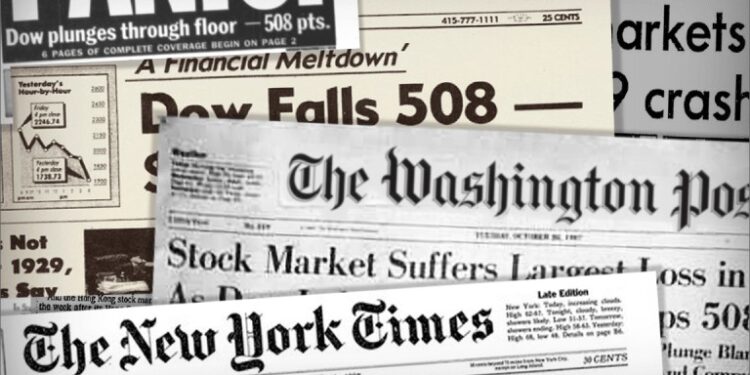The year 1987 will forever be etched in the annals of financial history as the year of the infamous “Black Monday.” On October 19, 1987, the Dow Jones Industrial Average (DJIA) suffered a catastrophic drop of nearly 23 percent, marking one of the most significant single-day plunges in the stock market’s history.
The 1980s were a period of economic expansion and bull markets. However, beneath the facade of prosperity, vulnerabilities were brewing. A series of factors converged to trigger the 1987 stock market crash. High-flying stock prices, exuberant investor sentiment, and excessive trading volumes were prominent warning signs.
On that fateful Monday in October, panic set in as a domino effect of selling swept across the stock market. The DJIA, a barometer of 30 major American companies, tumbled a staggering 508 points, equivalent to 22.6 percent of its value. The loss in a single day was greater than the entire DJIA’s value in 1982. Billions of dollars were wiped out in hours.
The crash had far-reaching consequences. Investors, both individual and institutional, suffered substantial losses, and confidence in the stock market waned. In the aftermath, there were concerns of a systemic financial collapse. However, policymakers and the Federal Reserve intervened, stabilizing the situation by injecting liquidity and supporting financial institutions.
The 1987 crash served as a harsh reminder of the inherent volatility in financial markets. It prompted regulators to introduce circuit breakers and trading halts to curb excessive price swings. Additionally, it led to a reevaluation of risk management and investment strategies.
Despite the immediate turmoil, the stock market ultimately rebounded, and the economy continued to grow. Lessons learned from Black Monday contributed to the development of more resilient financial systems and a better understanding of market dynamics.
In retrospect, the 1987 crash, while catastrophic, was a moment of reckoning and reform. It highlighted the need for vigilance and risk mitigation in financial markets, reminding investors that even in times of prosperity, the specter of market downturns can loom large.
newshub



Recent Comments